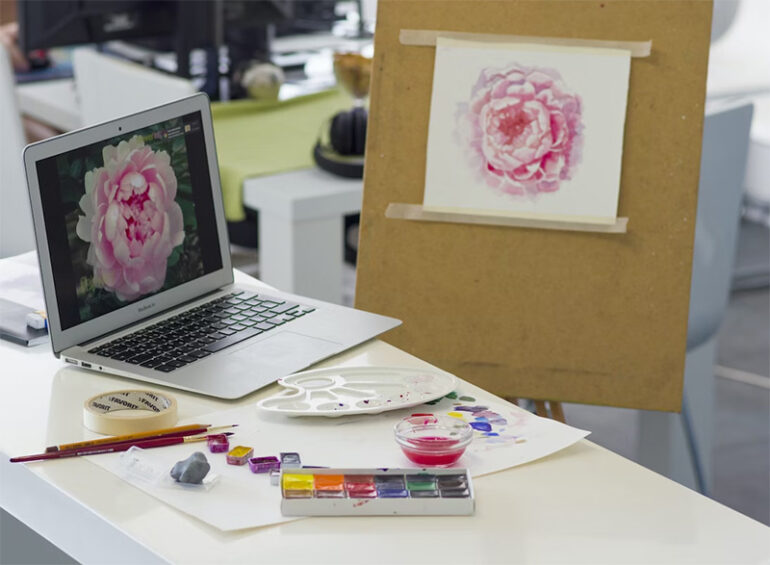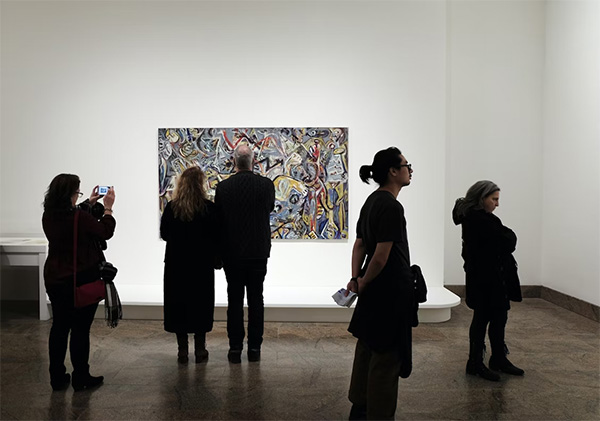Art is a powerful form of expression, captivating audiences with its creativity and emotional impact. With technology, art is changing. AI and interactive artworks are revolutionizing artistic exploration and audience engagement. This article explores how AI and interactive artworks are revolutionizing the way we perceive and interact with art.
AI in art creation
Artificial Intelligence has made its way into the creation process, enabling artists to push boundaries and explore new artistic territories. AI algorithms can now generate original artworks, imitating various artistic styles, and even creating entirely new ones. Artists can utilize AI tools to enhance their creativity, experimenting with different styles, techniques, and compositions. This fusion of human imagination and machine intelligence has resulted in mesmerizing pieces that challenge traditional notions of art creation.
AI in art curation
Beyond creation, AI has also revolutionized the curation of art exhibitions. With vast amounts of data available, AI algorithms can analyze patterns and trends, facilitating the selection process for curators. By understanding audience preferences and historical significance, AI can curate exhibitions that resonate with visitors on a deeper level. This integration of AI in curation ensures a more diverse and immersive experience for art enthusiasts, transcending the limitations of conventional curation methods.
Interactive artworks
Interactive artworks have emerged as a groundbreaking medium that engages viewers in a participatory and immersive experience. Combining technology and art, these installations invite active engagement, allowing the audience to become an integral part of the artwork itself. Whether it be through virtual reality, augmented reality, or sensors that respond to touch and movement, interactive artworks break down the boundaries between the observer and the art piece, fostering a deeper connection and understanding.
The impact on art appreciation
The integration of technology, AI, and interactive artworks has reshaped the way we appreciate and interact with art. Traditional art forms often limit the audience to passive observation, whereas technology-driven art encourages active participation and exploration. This shift has democratized art, making it accessible to a wider audience demographic. Additionally, technology has transcended physical boundaries, allowing people from all over the world to appreciate and engage with art through virtual exhibitions and online platforms.
Ethical implications and future possibilities
In the art realm, it is crucial to tackle the ethical implications of AI and interactive artworks as technology keeps advancing. Inquiries emerge concerning the position of artists in a creative process driven by AI and the possible absence of human touch and emotion. However, the potential for future innovation is vast. Art restoration could be facilitated by AI, thereby enabling the safeguarding of cultural heritage. In addition, virtual reality and augmented reality have the potential to transport viewers into completely different realms, allowing them to encounter art in ways that have never been seen before.
Revolutionizing the art world is the convergence of technology, AI, and interactive artworks. New tools and mediums empower artists, enabling them to express their creativity, while immersive and participatory art experiences are offered to audiences. The boundaries of what art can achieve are expanding, from AI-driven art creation and curation to interactive installations. In embracing these advancements, it is vital to consistently contemplate the ethical implications and guarantee that technology remains a tool for enhancing, rather than substituting, the human experience of art.
Photo Attribution:
1st & featured image by https://unsplash.com/photos/–bQ6fBl01g
2nd image by https://unsplash.com/photos/JNTSoyb_bbw

